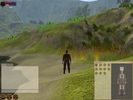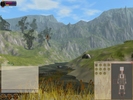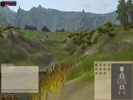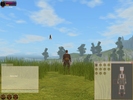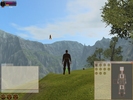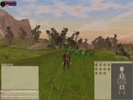
The last couple of weeks I've been all over the code base, working on different things each day it seems. I've upgraded Caelum to a newer version, fresh from svn. It gets better and better. New in this one is nicer sunsets and sunrises, but the same code which make that so nice also produces a little to large halo during the day. But overall it looks nicer and nicer.
I fixed some long standing but rare bugs, such as a crash when you had deleted an entity with the entity editor and wanted to look at another. I also fixed a very spurious problem where sometimes chat messages wouldn't appear in the console. Turned out that the lua garbage collector sometimes destroyed the connection object which binds chat messages to the console output. Garbage collected languages can be very nice, but when there's a problem like this it's really hard to track down due to the nature of the unpredictability of the destruction.
I also spent some days restructuring how media is handled. This is mainly a problem for other people wanting to help with the development. Since it's only been me for quite a while it's been quite easy: my box contains the latest dev media. But as more people get interested we need a better way of distributing the development media. In contrast to the release media this is very much in flux and is often updated. The new solution is to use a rsync service at amber which always will contain the latest media. By using the new make target "devmedia" it's possible for other developers to get the latest media by simply typing
make devmedia
and rsync will take care of it all. Furthermore I've removed the configure variable MEDIA_VERSION in favour of getting that information from ember.conf instead. This makes it much easier to configure and won't require a total recompile every time the media version changes. This is just one move towards a better media system. I've already added some
blueprints on how I would see the media system getting even more dynamic.
The icon rendering works nice and all when there's FBO support on your GPU, but when there's not there are a couple of issues. The current way of solving these is to delay the copying of the render information one frame and then blitting it to system memory and then to the icon atlas texture. However, the Ogre::Viewport class has the ability to render into just a smaller section of a larger texture. This would be perfect for the icons, since then we could render directly into the icon atlas. So I implemented that, only to find out that there's either a bug with how it works, or that I've totally misunderstood it. The problem is that every time a full frame render occurs, this seems to mess up the whole icon atlas texture, and renders junk data into all sections that don't have a viewport assigned to them. It seems the problem is that it either gets repainted by mistake, or that it's intended behaviour. I need to research it more closely, but for now that functionality is deactivated in favour of the old way of rendering icons.
It seems that I with regular intervals goes through the code looking for places where I can refactor it to better fit with updated behaviour, or simplify structures and methods that works like a cludge. Just basic cleanup. I spent one day doing that too, adding some nifty methods and classes to the configuration service as well as adding a new time service which can be used to both get local and server time. Should come in handy.

I've also evaluated both git and monotone. They both seems to have pretty much the same functionality, but I just like the feel of git better, so I'm gonna migrate all of Ember into that. We'll still keep the old cvs as read only, but all new development will happen in git.
Currently I'm working on adding an overhead map. It's good progress, but there are some different approaches to it. I can use CEGUI and do pretty much all of it with CEGUI elements. Or I can use Ogre overlays. Or use the Ogre compositor system. There's pros and cons with all of these, so currently I'm just getting a feel for it. There should be a working version in some days though.
Oh, and today is the day that Google announces the projects that it has accepted for the Summer of Code. This year we applied, so hopefully we've gotten a slot. But you never know.
 Worldforge has been accepted to the Google Summer of Code, which is really excellent in many different ways. Not only will we now get a student working on the code while being paid by Google, we will also get some nice publicity. I've already seen a sharp increase in visits to our sites after Google announces the projects that were approved two days ago. More information about this can be found in the wiki. We've also set up a new forum dedicated to the program.
Worldforge has been accepted to the Google Summer of Code, which is really excellent in many different ways. Not only will we now get a student working on the code while being paid by Google, we will also get some nice publicity. I've already seen a sharp increase in visits to our sites after Google announces the projects that were approved two days ago. More information about this can be found in the wiki. We've also set up a new forum dedicated to the program.


